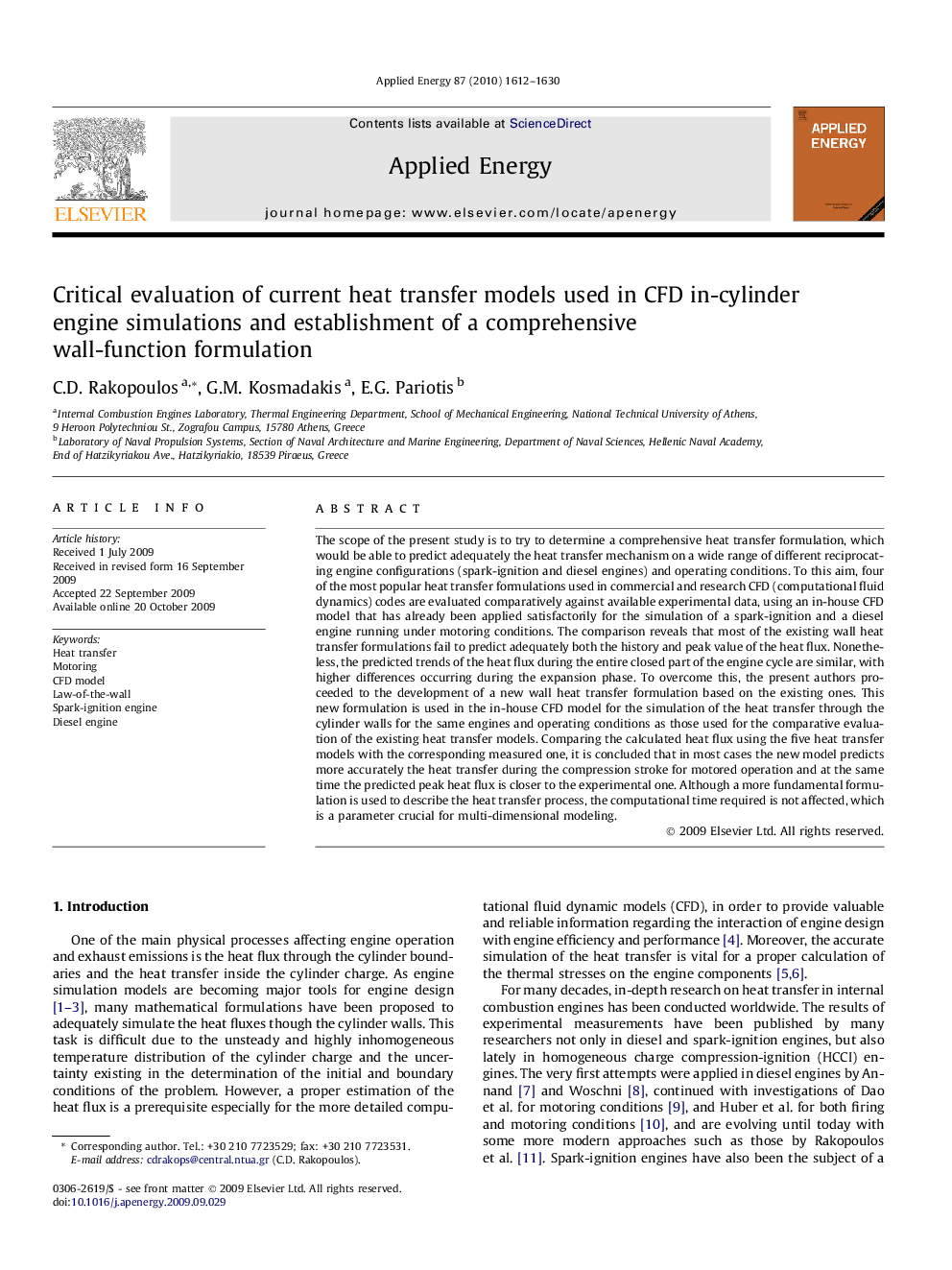| کد مقاله | کد نشریه | سال انتشار | مقاله انگلیسی | نسخه تمام متن |
|---|---|---|---|---|
| 244475 | 501951 | 2010 | 19 صفحه PDF | دانلود رایگان |

The scope of the present study is to try to determine a comprehensive heat transfer formulation, which would be able to predict adequately the heat transfer mechanism on a wide range of different reciprocating engine configurations (spark-ignition and diesel engines) and operating conditions. To this aim, four of the most popular heat transfer formulations used in commercial and research CFD (computational fluid dynamics) codes are evaluated comparatively against available experimental data, using an in-house CFD model that has already been applied satisfactorily for the simulation of a spark-ignition and a diesel engine running under motoring conditions. The comparison reveals that most of the existing wall heat transfer formulations fail to predict adequately both the history and peak value of the heat flux. Nonetheless, the predicted trends of the heat flux during the entire closed part of the engine cycle are similar, with higher differences occurring during the expansion phase. To overcome this, the present authors proceeded to the development of a new wall heat transfer formulation based on the existing ones. This new formulation is used in the in-house CFD model for the simulation of the heat transfer through the cylinder walls for the same engines and operating conditions as those used for the comparative evaluation of the existing heat transfer models. Comparing the calculated heat flux using the five heat transfer models with the corresponding measured one, it is concluded that in most cases the new model predicts more accurately the heat transfer during the compression stroke for motored operation and at the same time the predicted peak heat flux is closer to the experimental one. Although a more fundamental formulation is used to describe the heat transfer process, the computational time required is not affected, which is a parameter crucial for multi-dimensional modeling.
Journal: Applied Energy - Volume 87, Issue 5, May 2010, Pages 1612–1630